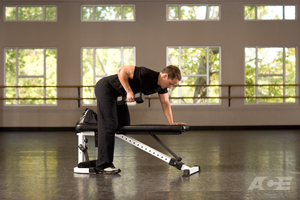This training plan is for R.H.
First of all, for anyone, before starting, increasing, or changing a workout routine check with your doctor and make sure that it is OK for you and your current health levels.
Now for the plan.
To put it together, I had to gather information to find out where he was starting.
He has been training for a year and has completed three half marathons with times of 2:55, 2:47, and 2:48. He runs 2-3 days per week, running 3-5 miles per run. He also gets in a bicycle workout once per week. As far as intensity level on his runs he said he does not push himself, and so continues to get the same results.
I am a big fan of Jack Daniel's running formula, and utilize a modified version of it when making plans for runners. Especially for those that have come to running after the advantage of youth has past us by. I am in that category, by the way.
R.H. has been doing Yoga 2-3 times per week, and I think continuing that will be sufficient for strength training for the time being. I'd like him to continue his bike cross training as well.
I decided to keep the three runs per week formula as it is working for him so far. If he would like to, he can add a fourth run of 2-3 miles each week.
Throughout the plan, R.H. can pick which days of the week work best for his training. If there is soreness after a quality run or long run, the next day should be a rest/recovery day. Light running or light exercise is OK on recovery days.
Easy runs will be approximately 14 minute 35 seconds per mile.
Phase 1.
Week 1: week of Nov. 11:
3 Mile easy run, 3 mile easy run, 5 mile easy run.
Week 2:
3 Easy, 3 Easy, 5 Easy
Week 3: (Thanksgiving week)
3E, 3E, 5E
Week 4:
3E, 3E, 5E,
Phase 2. Week of December 9th
Week 1.
3 mile easy run,
Quality run 4 miles including 1 mile warm up, 1 mile cool down, 4 repeats of 400 meters (or quarter mile) with a goal of running 400 m in 2:45, with a 400 m jog between each interval.
Long run 5 miles
Week 2.
3 mile easy run,
Quality run 4 miles including 1 mile warm up, 1 mile cool down, 4 repeats of 400 meters (or quarter mile) with a goal of running 400 m in 2:45, with a 400 m jog between each interval.
Long run 6 miles
Week 3. Easy week (Week of Christmas)
3 easy
3 easy
5 easy
Phase 3:
Week of Dec 30.
Week 1:
3 easy
Quality run 4 miles including 1 mile warm up, 1 mile cool down, 2 repeats of 800 meters in 5:30 with 800 meter rest between.
Long run 6 miles
Week 2.
3 easy
Quality run 4 miles including 1 warmup, 1 cooldown with 2 miles at a pace of 12:00 per mile.
Long run 7 miles
Week 3.
3 easy
quality run 4 miles including 1 mile warm up, 1 mile cool down, 2 repeats of 800 meters in 5:30 with 800 meter rest between.
Long run 7 miles
Week of Jan 20 Easy/recovery week
3 easy, 3 easy, 5 easy
Week 5.
3 easy
Quality run 4 miles including 1 warmup, 1 cooldown with 2 miles at a pace of 12:00 per mile.
Long run 8 miles
Phase 4.
Week of February 3.
Week one
3 easy,
Quality run 4 miles including 1 warmup, 1 cooldown with 2 miles at a pace of 12:00 per mile.
Long run 9 miles
Week two:
3 easy,
Quality run 4 miles including 1 warmup, 1 cooldown with 2 miles at a pace of 12:00 per mile.
Long run 10 miles
Week three:
3 easy,
Quality run 4 miles including 1 warmup, 1 cooldown with 2 miles at a pace of 12:00 per mile.
Long run 10 miles
Week of February 24th
Taper Week.
3 easy
3 easy with faster strides if it feels good
7 mile long run
Race week
3 easy
3 easy with strides if it feels good
Half Marathon race.
Good luck R.H.!!











